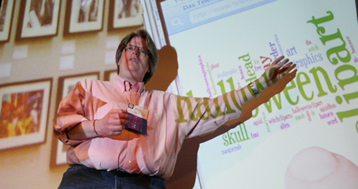Multimedia Communication Issues: Why, What and When 
Marco Franciolli, Museo Cantonale d'Arte, Switzerland
Elisa Rubegni, Università della Svizzera Italiana, Switzerland
Paolo Paolini, Politecnico di Milano, Italy
This paper is about a fundamental, three-fold issue concerning interactive multimedia communication. What is the best timing for providing information about an exhibition? And, depending on the answer: what should be the goal(s) be? What kind of information should be provided? We want to challenge the implicit assumption that ’before the visit’ is the best time for delivering synthetic, promotional and practical information, while ‘during the visit’ is the best time for providing in-depth information. We propose here that two additional important segments should be considered: users who have already visited the exhibition, and users who will never visit it at all. We suspect that ’after the visit’ could be a suitable time for pursuing a strong cultural impact (providing in-depth content, multimedia material, links to interesting sources, etc.). Moreover, past visitors are usually easy targets to reach: they bought tickets! Also, non-visitors could be interested in receiving in-depth communication. Our discussion is based on observations and data collected during two extensive user studies (involving more than 250 users) conducted on the occasion of the exhibition Enigma Helvetia, held at Museo Cantonale d’Arte and Museo d’Arte Moderna, in Lugano (Ticino, Switzerland) in 2008. Additional observations are drawn from a third user study, still ongoing, for the exhibition Look at me, at the same museum.
Session: Actionable Research [research]
Keywords: user-study, multimedia, multi-channel, evaluation, research
